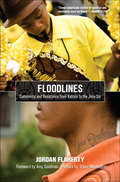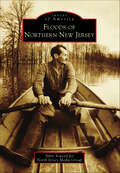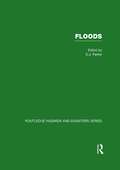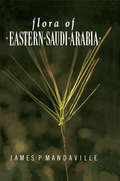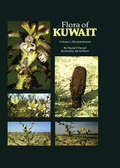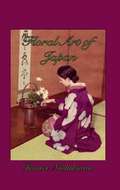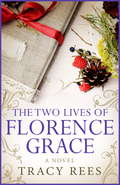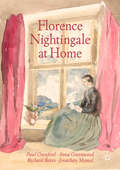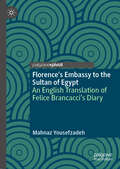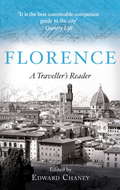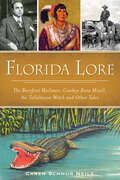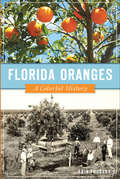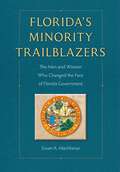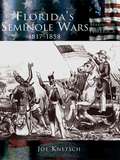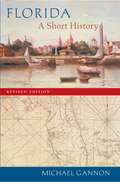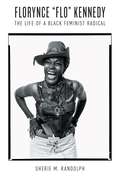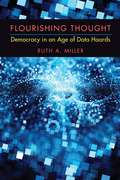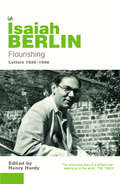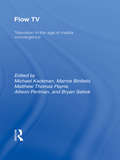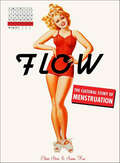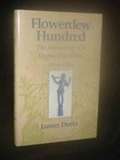- Table View
- List View
Floodlines: Community and Resistance from Katrina to the Jena Six
by Jordan FlahertyOrganizers, activists, artists and community members share their struggles in New Orleans before and after Hurricane Katrina.Floodlines is a firsthand account of community, culture, and resistance in New Orleans. The book weaves the stories of gay rappers, Mardi Gras Indians, Arab and Latino immigrants, public housing residents, and grassroots activists in the years before and after Katrina. From post-Katrina evacuee camps to torture testimony at Angola Prison to organizing with the family members of the Jena Six, Floodlines tells the stories behind the headlines from an unforgettable time and place in history.Praise for Floodlines“This is the most important book I’ve read about Katrina and what came after. In the tradition of Howard Zinn this could be called “The People’s History of the Storm.” Jordan Flaherty was there on the front lines.” —Eve Ensler, playwright of The Vagina Monologues, activist and founder of V-Day“Jordan Flaherty brings the sharp analysis and dedication of a seasoned organizer to his writing, and insightful observation to his reporting. He unfailingly has his ear to the ground in a city that continues to reveal the floodlines of structural racism in America.” —Tram Nguyen, author of We Are All Suspects Now: Untold Stories from Immigrant Communities after 9/11“Flaherty pulls no punches . . . . Readers will be compelled, depressed, disturbed, and angered by what they find in this well-written report. Crucial reading.” —Publishers Weekly, Starred Review
Floods of Northern New Jersey (Images of America)
by North Jersey Media Group Amre YoussefSituated between winding rivers and prone to turbulent storms, northern New Jersey has had an extensive and tumultuous history of flooding. The most severe flood occurred in 1903 when three days of nonstop rain, averaging 12 inches per day, melted more than 23 inches of snow and ice�inundating the cities of Passaic and Wallington and splitting Paterson in two. Since 1945, more than 60 documented storms have wreaked havoc and shaken the region. In 2011, the second-worst storm in North Jersey�s history, Hurricane Irene, struck with more than 11 inches of rain, displacing 6,000 residents in Paterson alone and hitting Bergen and Passaic Counties with a vengeance. Only one year later, Superstorm Sandy rolled into North Jersey, flooding Moonachie and Little Ferry with surges up to five feet. Floods of Northern New Jersey showcases the rich documentation of flooding through a unique and significant photographic collection.
Floods: British Policies For Hazard Reduction, Agricultural Improvement And Wetland Conservation (Routledge Library Editions: Conservation Ser. #5)
by D. J. ParkerFloods occur in most parts of the world and range from being welcomed annual occurrences, to natural disasters which have countless physical and societal impacts. Floods presents the most comprehensive collection to date of new research, providing a rich body of theory and experience and drawing together contributions from over fifty leading international researchers in the field. An extensive range of case-studies covering major floods and regions prone to flooding worldwide are included.
Flora Of Eastern Saudi Arabia
by MandavilleFirst published in 1990. Routledge is an imprint of Taylor & Francis, an informa company.
Flora Of Kuwait Vol 1: Volume 1 Dicotyledoneae
by DaoudFirst published in 1985. Routledge is an imprint of Taylor & Francis, an informa company.
Flora of the Codex Cruz-Badianus
by Jules Janick Arthur O. TuckerIn 1929, Charles Upson Clark (1975-1960), a history Professor at Columbia University carrying out bibliographic research on the early history of the Americas in the Vatican Library, came across a remarkable illustrated Latin manuscript entitled Libellus de Medicinalibus Indorum Herbis (Little Book of Indian Medicinal Herbs) completed in 1552. The manuscript now known as the Codex Cruz-Badianus (CCB) contained 185 illustrations (phytomorphs) of plants with text that described their medicinal uses. This manuscript spread new light on botanical and medicinal knowledge of the indigenous peoples of Mexico known today as the Nahuas or Aztecs. It was to have major repercussions on our knowledge of Aztec culture and the history of New Spain in the 16th century.CCB was produced at the Colegio of Imperial de Santa Cruz at Tlatelolco established in 1536 to train sons of the Aztec nobility for the clergy. The authors were two indigenous faculty members, Martin (Martinus in Latin) de la Cruz and Juan Badiano (Juannes Badianus in Latin) whose Spanish names were conferred upon their baptism. Martin de la Cruz was the Colegio’s indigenous doctor who gave instruction in medicine and Juan Badiano, a Latin teacher and former student translated the book into Latin.The herbal dedicated to the Viceroy Francisco de Mendoza was sent to Spain as a gift to King Carlos I soon after its completion in 1552. The original ended up in the Vatican Library until 1990 when John Paul II returned it to Mexico. In 1931, the Mayanist scholar, William Gates, and the biologist Emily Walcott Emmart became aware of the manuscript and independently translated it to English. In 2009, Martin Clayton, Luigi Guerrini, and Alejandro de Avila identified plants of the CCB based on Emmart’s book and a 17th century copy found in the Windsor library. Of the 185 phytomophs, Gates identified 85 on the generic level, Emmart 9, and Clayton et al. 126. However most of these identifications disagree. In the present work, 183 of 185 phytomorphs are systematically re-evaluated and identified on the generic, as well as specific level, along with their botanical descriptions, previous identifications, putative identification, distribution, names, and uses.
Flora of the Voynich Codex: An Exploration of Aztec Plants
by Jules Janick Arthur O. TuckerThe Voynich Codex is one the most fascinating and bizarre manuscripts in the world. The manuscript (potentially equivalent to 232 pages), or more properly a codex, consists of many foldout pages. It has been divided by previous researchers into sections known as Herbal/Botanical/Pharmacology; Balenological/Biological; Cosmology; one page known as The Rosette; and a final Recipe section. All the sections contain text in an unknown writing system, yet to be deciphered. Cryptological analyses by modern computer programs nevertheless have determined that the language is real and not a hoax, as has been suggested by some. Despite the fact that this codex is largely an herbal, the interpreters of this manuscript with two exceptions, have not been botanists. To this end, our recent research suggests that the Voynich is a 16th century codex associated with indigenous Indians of Nueva España educated in schools established by the Spanish. This is a breakthrough in Voynich studies. We are convinced that the Voynich codex is a document produced by Aztec descendants that has been unfiltered through Spanish editors. The flora of New Spain is vast, and the medicinal and culinary herbs used by the Aztecs were equally as copious. Even though it is our hypothesis that the Voynch Codex was written as a private herbal in 16th century New Spain, many of these herbs have relevance today because they or closely related species have been noted to be medicinal or have culinary value. The Voynich Codex has an estimated 359 illustration of plants (phytomorphs), 131 in the Herbal Section (large images) and 228 in the Pharmaceutical Section (small images of plant parts). In our book “Unraveling of the Voynich Codex”, to be published by Springer this summer, Tucker and Janick have partially identified species in the Herbal Section. In this proposed work, all of the plants of the Herbal Section will be identified along with those plants of the Pharmacology Section where identification is feasible. Each plant identification will include subdivisions to include descriptors (formal botanical identification), names in English, Spanish, and Mesoamerican names where known, ecology and range, and properties (medicinal and culinary) of these and related species. Photographs of the phytomorphs and contemporary plants will be included. These identifications represent hard evidence that the Voynich Codex is a 16th Century Mexican manuscript. Exploring the herbs of the Aztecs through the Voynich Codex will be a seminal work for all Voynich researchers and also of interest to a wider audience in medicinal and culinary herbs, artists, and historians. In summary, our new book project Flora of the Voynich Codex will provide a photo-illustrated guide to complete the botanical evidence related to the Voynich Codex, one of the most valuable historic texts of the 16th century.
Floral Art Of Japan
by NishikawaFirst published in 2005. Routledge is an imprint of Taylor & Francis, an informa company.
Florence Grace: "Possibly the most wonderful book I've ever read"
by Tracy Rees'Possibly the most wonderful book I've ever read. A complete joy' Amazon reviewer. Florrie Buckley is an orphan, living on the wind-blasted moors of Cornwall. It's a hard existence but Florrie is content. But when she is fourteen, she inherits a never-imagined secret: she is related to a wealthy and notorious London family, the Graces. Overnight, Florrie's life changes and she moves from country to city, from poverty to wealth. Cut off from everyone she has ever known, Florrie struggles to learn the rules of this strange new world. And then she must try to fathom her destructive pull towards the enigmatic and troubled Turlington Grace, a man with many dark secrets of his own. What readers are saying about Tracy Rees: "Tracy Rees writes from the heart" Kathryn Hughes, bestselling author of The Letter "Tracy Rees is the most outstanding new voice in historical fiction" Lucinda Riley "A beautifully crafted story with added romance" Isabelle Broom "Tracy's writing is so fresh, original and authentic" Rosanna Ley
Florence Nightingale at Home
by Paul Crawford Anna Greenwood Richard Bates Jonathan MemelWinner of the 2021/2022 People's Book Prize Best Achievement AwardHomes can be both comforting and troubling places. This timely book proposes a new understanding of Florence Nightingale’s experiences of domestic life and how ideas of home influenced her writings and pioneering work. From her childhood homes in Derbyshire and Hampshire, she visited the poor sick in their cottages. As a young woman, feeling imprisoned at home, she broke free to become a woman of action, bringing home comforts to the soldiers in the Crimean War and advising the British population on the home front how to create healthier, contagion-free homes. Later, she created Nightingale Homes for nursing trainees and acted as mother-in-chief to her extended family of nurses. These efforts, inspired by her Christian faith and training in human care from religious houses, led to major changes in professional nursing and public health, as Nightingale strove for homely, compassionate care in Britain and around the world. Shedid most of this work from her bed after contracting the debilitating illness, brucellosis, in the Crimea, turning her various private homes into offices and ‘households of faith’. In the year of the bicentenary of her birth, she remains as relevant as ever, achieving an astonishing cultural afterlife.
Florence's Embassy to the Sultan of Egypt: An English Translation of Felice Brancacci's Diary
by Mahnaz YousefzadehThis book is the first English translation of Felice di Michele Brancacci’s diary of his 1422 mission to the court of Sultan Al-Ashraf Seyf-ad-Din Barsbay of Egypt. Following the purchase of Port of Pisa in 1421, and the building of a galley system, Florence went on to assume a more active role in Levant trade, and this rich text recounts the maiden voyage of the Florentine galleys to Egypt. The text portrays the transnational experiences of Brancacci including those between the East and West, Christians and Muslims, and the ancient and modern worlds. The accompanying critical introduction discusses the unexpected motifs in Brancacci’s voyage, as well as tracing the aftershocks of what was a traumatic Egyptian experience for him. It shows that this aftershock was then measured, captured, and memorialized in the iconic image of Tribute Money, the fresco he commissioned from Masaccio, on his return to his own world in Florence.
Florence: A Traveller's Reader
by Edward ChaneyOf all Italian cities, Florence has always had the strongest English accent: the Goncourt brothers in 1855 called it 'ville tout anglaise'. Though that accent is diminished now, Florence remains for the English-speaking traveller what it always has been - one of the best loved, and most visited, of cities.In this Traveller's Reader, Florence's rich and glorious past is brought vividly to life for the tourist of today through the medium of letters, diaries and memoirs of travellers to Florence from past centuries and of the Florentines themselves. The extracts chosen by cultural historain Edward Chaney include: Boccaccio on the Black Death; Vasari on the building of Giotto's Campanile; an eye-witness account of the installation of Michaelangelo's 'David'; the death of Elizabeth Barrett Browning at the Casa Guidi; and D. H. Lawrence and Dylan Thomas on twentieth-century Florentine society. Sir Harold Acton's introduction provides a concise history of the city from its origins, through its zenith as a prosperous city state which, under the Medici, gave birth to the Renaissance, and up to the Arno's devastating flood in 1966. Sir Harold Acton, man of letters, historian, aesthete, novelist and poet, spent most of his life in Florence. Among his best-known books is The Last Medici, Memoirs of an Aesthete.Currently Professor of Fine and Decorative Arts at Southampton Solent University, Edward Chaney is an honorary life member of the British Institute of Florence and taught at the University of Pisa for six years.
Florida Civics Economics & Geography
by John J. Patrick Richard C. Remy Gary E. Clayton David C. SaffellHigh School Social Studies Textbook
Florida Lore: The Barefoot Mailman, Cowboy Bone Mizell, the Tallahassee Witch and Other Tales (American Legends Ser.)
by Caren Schnur NeileThis fascinating collection of myths, legends and folktales celebrates the diversity of characters and cultures across the Sunshine State. Florida boasts mysterious tales that stretch back more than twelve thousand years. In Florida Lore, storyteller Caren Schnur Neile shares a treasure trove of colorful, curious tales that capture her home state&’s history, mystery, and unique personality. Delve into the lives of the proud Wakulla Pocahontas and the Ghost of Bellamy Bridge. Meet local lawbreakers like John Ashley, as well as transplants like Ma Barker and Al Capone. Stalk stumpy gators or Hogzilla as they prowl Florida's swamps and suburbs. Discover the quintessential Cracker cowboy and the Barefoot Mailman, plus the origin of names like Boca Raton and Orlando.
Florida Oranges: A Colorful History (American Palate)
by Erin ThursbyA vibrant history of Florida&’s horticultural heritage and the colorful personalities who made the state synonymous with citrus. In the 16th century, Ponce de León planted the first orange groves in St. Augustine, Florida. They were the precursor to what would become an integral part of Florida&’s identity. Orange groves slowly spread across the state, inspiring agricultural innovations and manufacturing ingenuity. Now Florida food writer Erin Thursby reveals the surprisingly colorful history of Florida&’s most famous crop. Discover the story behind Deland&’s eccentric &“citrus wizard&” Lue Gim Gong; the rise and fall of smuggler Jesse Fish; and the silver-tongued politician William J. Howey, who made his fortune selling plots of groveland through the 1920s. Celebrate the heyday of orange tourism and the farmers who weathered freezes, floods and citrus greening. From the old roots of orange cultivation in Northeast Florida to the new center of oranges in the Southwest, Thursby offers a unique historical tour of the Sunshine State.
Florida's Minority Trailblazers: The Men and Women Who Changed the Face of Florida Government (Florida Government and Politics)
by Susan MacManus"Saves a piece of Florida political history by narrating the personal stories of the state's 'minority trailblazers' from the Civil Rights Movement to the present day."--Richard E. Foglesong, author of Immigrant Prince: Mel Martinez and the American Dream "Captures Florida's ongoing political transition from a 'yellow-dog,' lily-white state to one where diversity is beginning to make an impact on politics."--Doug Lyons, former senior editorial writer, South Florida Sun-Sentinel Florida experienced a population surge during the 1960s that diversified the state and transformed it into a microcosm of the nation, but discrimination remained pervasive. With the passage of the Civil Rights Act of 1964 and the Voting Rights Act of 1965, along with later rulings on redistricting and term limits, the opportunity to participate in government became more and more possible for previously silenced voices. Drawing primarily from personal interviews, Susan MacManus recounts the stories of the first minority men and women--both Democrat and Republican--who were elected or appointed to state legislative, executive, and judicial offices and to the U.S. Congress since the 1960s. She reveals what drove these leaders to enter office, how they ran their campaigns, what kinds of discrimination they encountered, what rewards each found during their terms, and what advice they would share with aspiring politicians. In addition to the words of the officeholders themselves, MacManus provides helpful timelines, photos, biographical sketches of each politician, and election results from path-breaking victories. The book also includes comprehensive rosters of minority individuals who have held state offices and those who have gone on to represent Florida in the federal government. Full of inspiring stories and informative statistics, Florida's Minority Trailblazers is an in-depth rendering of personal struggles--guided by opportunity, ambition, and idealism--that have made Florida the vibrant, diverse state it is today. Susan A. MacManus is Distinguished University Professor in the Department of Government and International Affairs at the University of South Florida and the coauthor of Politics in Florida and Politics in States and Communities. A volume in the series Florida Government and Politics, edited by David R. Colburn and Susan A. MacManus
Florida's Seminole Wars: 1817-1858 (Making of America)
by Joe KnetschAmong the most well known of Florida's native peoples, the Seminole Indians frustrated troops of militia and volunteer soldiers for decades during the first half of the nineteenth century in the ongoing struggle to keep hold of their ancestral lands. While careers and reputations of American military and political leaders were made and destroyed in the mosquito-infested swamps of Florida's interior, the Seminoles and their allies, including the Miccosukee tribe and many escaped slaves, managed to wage war on their own terms. The study of guerrilla warfare tactics employed by the Seminoles may have aided modern American forces fighting in Viet Nam, Cambodia, and other regions. Years before the first shots of the Civil War were fired, Florida witnessed a clash of wills and ways that prompted three wars unlike any others in America's history, although many of the same policies and mistakes were made in the Indian wars west of the Mississippi.
Florida: A Short History, Revised Edition
by Michael GannonGannon tells his fast-marching saga in chronological fashion. Starting with the wilderness of the ancient earth, he fills the landscape with Indians, colonists, pioneers, entrepreneurs, politicians, and the panorama of Florida today. This revised edition concludes with a look into the twenty-first century, including “in-migration,” restoration of the Everglades, education, the work force, and the infamous 2000 presidential election.
Florynce “Flo” Kennedy
by Sherie M. RandolphOften photographed in a cowboy hat with her middle finger held defiantly in the air, Florynce "Flo" Kennedy (1916-2000) left a vibrant legacy as a leader of the Black Power and feminist movements. In the first biography of Kennedy, Sherie M. Randolph traces the life and political influence of this strikingly bold and controversial radical activist. Rather than simply reacting to the predominantly white feminist movement, Kennedy brought the lessons of Black Power to white feminism and built bridges in the struggles against racism and sexism. Randolph narrates Kennedy's progressive upbringing, her pathbreaking graduation from Columbia Law School, and her long career as a media-savvy activist, showing how Kennedy rose to founding roles in organizations such as the National Black Feminist Organization and the National Organization for Women, allying herself with both white and black activists such as Adam Clayton Powell, H. Rap Brown, Betty Friedan, and Shirley Chisholm.Making use of an extensive and previously uncollected archive, Randolph demonstrates profound connections within the histories of the new left, civil rights, Black Power, and feminism, showing that black feminism was pivotal in shaping postwar U.S. liberation movements.
Flourishing Thought: Democracy in an Age of Data Hoards
by Ruth A. MillerChallenging the posthumanist canon that celebrates the preeminence of matter, Ruth Miller, in Flourishing Thought contends that what nonhuman systems contribute to democracy is thought. Drawing on recent feminist theories of nonhuman life and politics, Miller shows that reproduction and flourishing are not antithetical to contemplation and sensitivity. After demonstrating that processes of life and processes of thought are indistinguishable, Miller finds that four menacing accumulations of matter and information--global surveillance, stored embryos, human clones, and reproductive trash--are politically productive rather than threats to democratic politics. As a consequence, she questions the usefulness of individual rights such as privacy and dignity, contests the value of the rational metaphysics underlying human-centered political participation, and reevaluates the gender relations that derive from this type of participation. Ultimately, in place of these human-centered structures, Miller posits a more meditative mode of democratic engagement. Miller's argument has shattering implications for the debates over the proper use and disposal of embryonic tissue, alarms about data gathering by the state and corporations, and other major ethical, social, and security issues.
Flourishing: Letters 1928 - 1946
by Isaiah BerlinBerlin's letters are marvellously accessible, and as entertaining. During the two decades covered here his personality and career grow and bloom. In America, during the war, he writes a regular telegram to his anxious parents, often saying just 'Flourishing'; the word fits not only his wartime experience, but the whole of his early life, vividly displayed in this book in all its multi-faceted delightfulness.
Flow TV: Television in the Age of Media Convergence
by Michael KackmanFrom viral videos on YouTube to mobile television on smartphones and beyond, TV has overflowed its boundaries. If Raymond Williams' concept of flow challenges the idea of a discrete television text, then convergence destabilizes the notion of television as a discrete object. Flow TV examines television in an age of technological, economic, and cultural convergence. Seeking to frame a new set of concerns for television studies in the 21st century, this collection of all new essays establishes television’s continued importance in a shifting media culture. Considering television and new media not as solely technical devices, but also as social technologies, the essays in this anthology insist that we turn our attention to the social, political, and cultural practices that surround and inform those devices' use. The contributors examine television through a range of critical approaches from formal and industrial analysis to critical technology studies, reception studies, political economy, and critiques of television's transnational flows. This volume grows out of the critical community formed around the popular online journal Flow: A Critical Form on Television and Media Culture (flowtv.org). It is ideal for courses in television studies or media convergence.
Flow: The Cultural Story of Menstruation
by Susan Kim Elissa SteinIn this hip, hilarious and truly eye-opening cultural history, menstruation is talked about as never before. Flow spans its fascinating, occasionally wacky and sometimes downright scary story: from mikvahs (ritual cleansing baths) to menopause, hysteria to hysterectomies—not to mention the Pill, cramps, the history of underwear, and the movie about puberty they showed you in 5th grade. Flow answers such questions as: What's the point of getting a period? What did women do before pads and tampons? What about new drugs that promise to end periods—a hot idea or not? Sex during your period: gross or a turn-on? And what's normal, anyway? With color reproductions of (campy) historical ads and early (excruciating) femcare devices, it also provides a fascinating (and mind-boggling) gallery of this complex, personal and uniquely female process. As irreverent as it is informative, Flow gives an everyday occurrence its true props – and eradicates the stigma placed on it for centuries.
Flowerdew Hundred: The Archaeology of a Virginia Plantation, 1619-1864
by James DeetzArchaeological excavations began in the 1970s to reconstruct some 250 years of life at the 1,000 acre plantation that Virginia's first governor established roughly halfway between present-day Richmond and Williamsburg. Deetz (anthropology, U. of Virginia) presents some of the findings and pays particular attention to archaeology's value in fleshing out the stories of people omitted from written records, or included in only minimal or biased ways. Annotation c. by Book News, Inc., Portland, Or.
